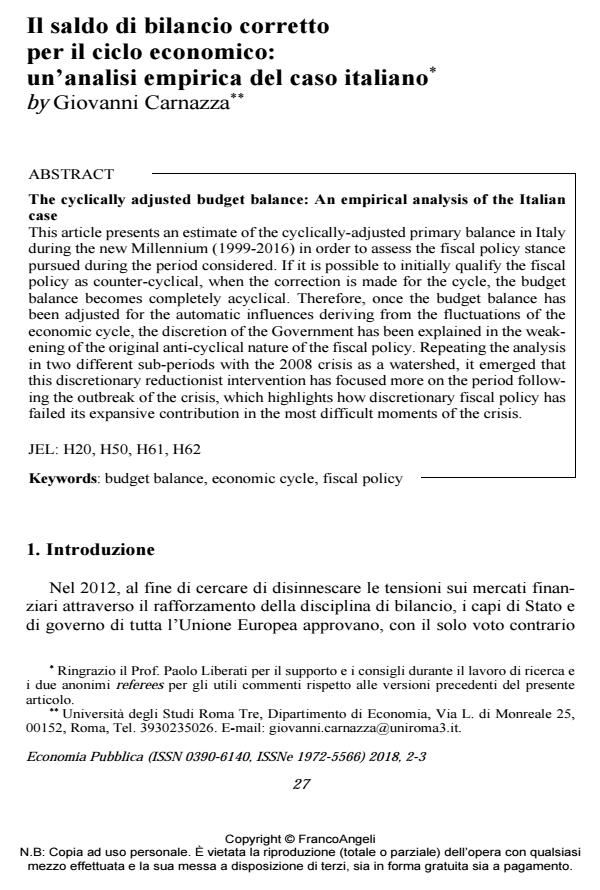Il saldo di bilancio corretto per il ciclo economico: un’analisi empirica del caso italiano
Titolo Rivista ECONOMIA PUBBLICA
Autori/Curatori Giovanni Carnazza
Anno di pubblicazione 2018 Fascicolo 2018/2-3
Lingua Italiano Numero pagine 26 P. 27-52 Dimensione file 444 KB
DOI 10.3280/EP2018-002002
Il DOI è il codice a barre della proprietà intellettuale: per saperne di più
clicca qui
Qui sotto puoi vedere in anteprima la prima pagina di questo articolo.
Se questo articolo ti interessa, lo puoi acquistare (e scaricare in formato pdf) seguendo le facili indicazioni per acquistare il download credit. Acquista Download Credits per scaricare questo Articolo in formato PDF

FrancoAngeli è membro della Publishers International Linking Association, Inc (PILA)associazione indipendente e non profit per facilitare (attraverso i servizi tecnologici implementati da CrossRef.org) l’accesso degli studiosi ai contenuti digitali nelle pubblicazioni professionali e scientifiche
The cyclically adjusted budget balance: An empirical analysis of the Italian case This article presents an estimate of the cyclically-adjusted primary balance in Italy during the new Millennium (1999-2016) in order to assess the fiscal policy stance pursued during the period considered. If it is possible to initially qualify the fiscal policy as counter-cyclical, when the correction is made for the cycle, the budget balance becomes completely acyclical. Therefore, once the budget balance has been adjusted for the automatic influences deriving from the fluctuations of the economic cycle, the discretion of the Government has been explained in the weakening of the original anti-cyclical nature of the fiscal policy. Repeating the analysis in two different sub-periods with the 2008 crisis as a watershed, it emerged that this discretionary reductionist intervention has focused more on the period following the outbreak of the crisis, which highlights how discretionary fiscal policy has failed its expansive contribution in the most difficult moments of the crisis.
Parole chiave:Budget balance, economic cycle, fiscal policy
Jel codes:H20, H50, H61, H62
Giovanni Carnazza, Il saldo di bilancio corretto per il ciclo economico: un’analisi empirica del caso italiano in "ECONOMIA PUBBLICA " 2-3/2018, pp 27-52, DOI: 10.3280/EP2018-002002